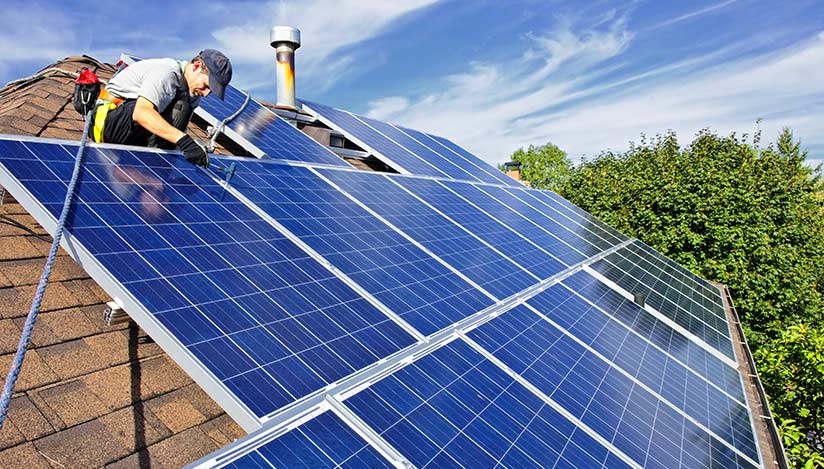The California Energy Commission’s update to the state’s Building Energy Efficiency Standards in May 2018 included a big surprise for builders and homebuyers. Most new single-family homes and low-rise multifamily residences built in the state will be required to have solar power systems installed during construction.
All 5 members of the CEC voted to approve the requirement, despite estimates that home prices will increase by $8,000 to $18,000 after it goes into effect in 2020. The unanimous decision gives some insight into just how eager public advocates and California agencies are to reduce reliance on the state’s energy grid.
But what does this mean for homebuyers and developers? What do they need to know? Here’s a rundown on some of the most important aspects of the new building requirement.
Solar power systems which meet the minimum sizing requirements won’t have enough capacity to zero-out energy usage.
The minimum energy production of a pre-installed system will be 2 to 3 kilowatts, depending on the size of the home or building. But the average energy production of solar power systems installed in California is around 6 to 7 kilowatts.
The majority of the solar power systems installed according to the California requirements will not be capable of completely offsetting energy usage. In fact, even during daylight hours, even moderate energy consumption will likely require tapping into the grid to supplement energy output from the solar power system. This means that many homeowners won’t be able to take advantage of net energy metering, the system by which homeowners can sell energy back to utility companies. Consequently, they will still face hefty electricity bills during periods of high usage, especially as time-of-use prices continue to increase.
Those in the market for a new home would be wise to ask questions about the production capacity of the pre-installed system.
Those with homes without natural gas service will face particularly high energy bills.
The new California standards were developed based upon electricity demand from homes with electricity and natural gas service. That is, homes that rely on natural gas for heating and cooking.
For new homes without natural gas service, homeowner will face especially high overruns in their electricity usage. Homeowners considering a home without natural gas will want to consider the feasibility of starting natural gas service. Alternatively, it would be prudent to make sure the pre-installed system has a production capacity of at least 6 kilowatts.
An alternative is to consider having a solar power system expansion installed after buying a home, especially if you have a plug-in electric or hybrid vehicle.
Those on the market for a home may have to wait until 2021 to ensure their home comes preinstalled with a solar power system.
While the new requirement comes into effect at the beginning of 2020, many homebuilders obtain the necessary permits for single- and multi-family residences up to a year in advance. Whether a new home build requires solar panels or not depends upon when the permit is pulled, rather than when construction actually starts.
As a result, SunPower estimates that only about half of the 165,000 residences built in 2020 which fall under the new requirements will have to comply.
Despite the increase in new home prices caused by the new solar requirement, many homebuyers will still enjoy a net monthly savings from the get-go.
According to the CEC, the solar power requirement will increase home prices by anywhere from $7,993 to $17,730, depending on location. However, the benefit-to-cost ratio for the 16 climate zones analyzed in the CEC’s report ranges between 1.7 to 2.3 over the period of a 30-year mortgage. Thus, for every dollar spent on the system, it’s expected to reduce energy costs by $1.70 to $2.30.
In total, the CEC estimates that the average homeowner will pay an extra $40 per month on a 30-year mortgage but will save $80 on their energy bills. However, some believe that cost of buying and installing required solar power systems will be as much as 50% lower than the CEC’s estimates. This is because installers won’t have the typical costs associated with customer acquisition and will be able to do projects in bulk.
Homebuilders will be responsible for covering the cost of installing required solar power systems.
The CEC’s new building code was designed for maximum flexibility, rather than having a centralized fixed procedure that might be impractical in some housing markets. One consequence of this is that builders are responsible for covering the upfront costs of buying and installing solar systems. Generally speaking, they have three options:
- Contract directly with solar power installers, then tack the price onto the project, just as they would for optional upgrades.
- Have customers pay cash up front.
- Work with a solar company to negotiate a solar loan or lease.
It is advisable for builders to take advantage of the time leading up to the 2020 solar installation requirement byexploring their options in depth. If you are a builder or developer looking to find a partner for your solar installation needs, contact Capital City Solar by calling (916) 782-3333, or send us a message using our contact form.
